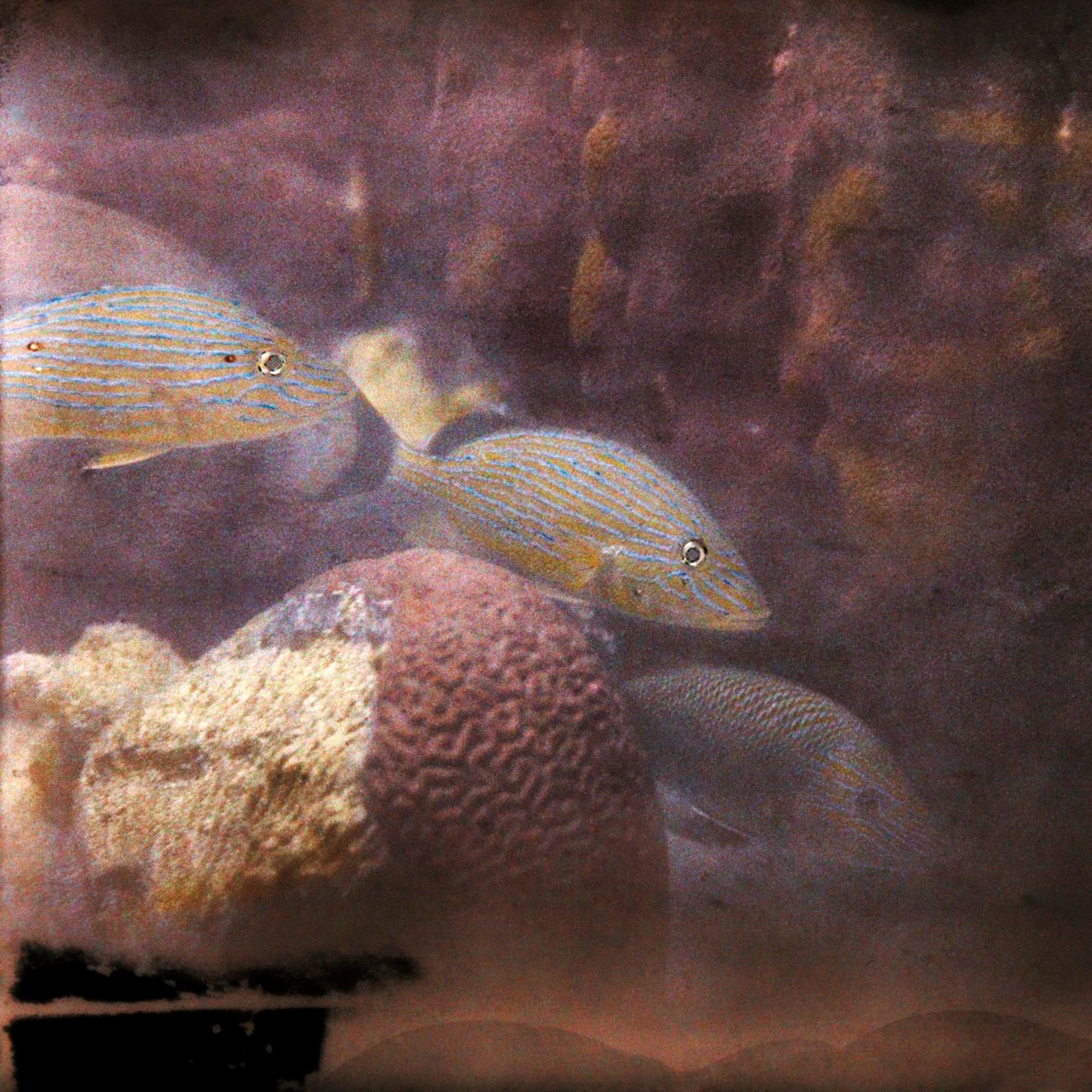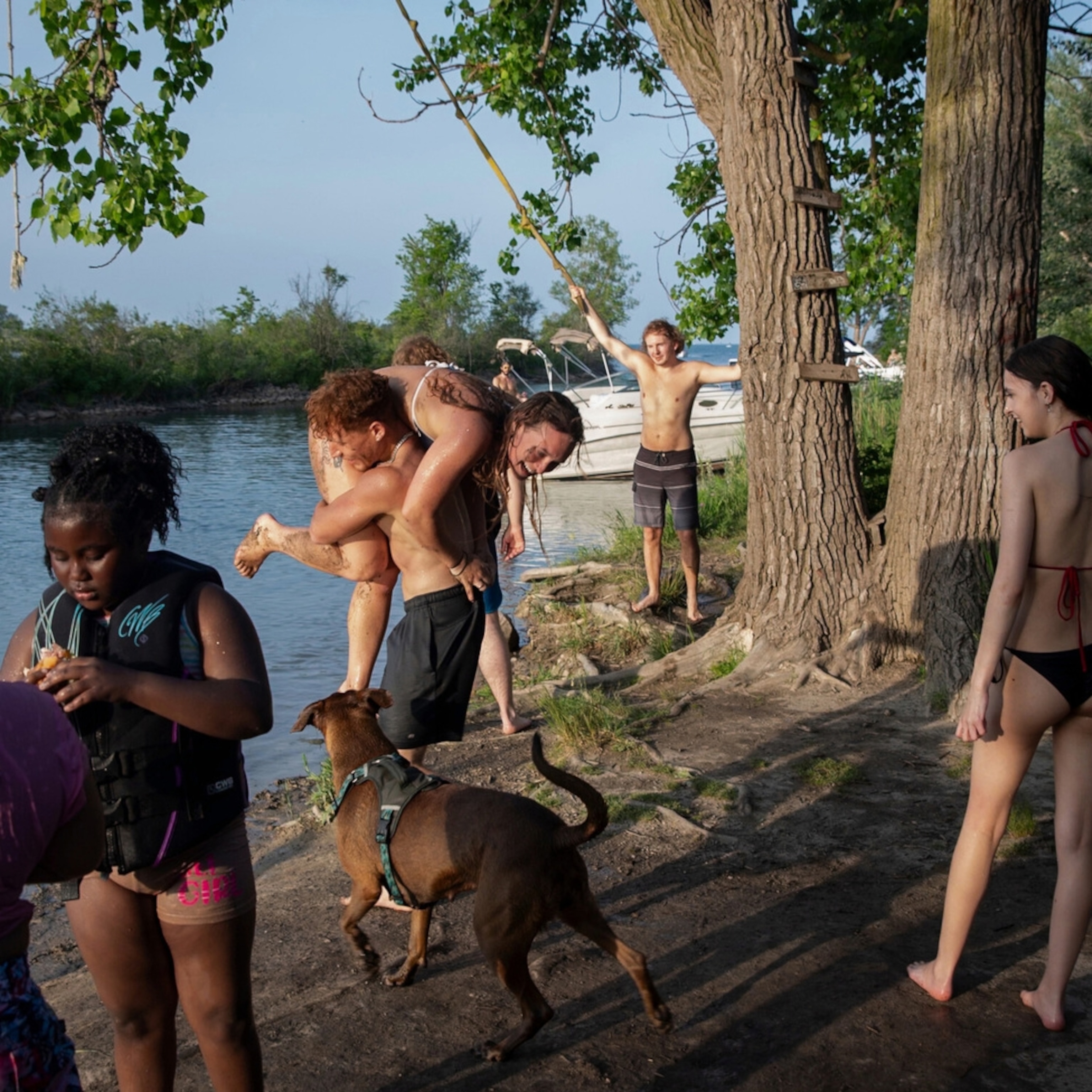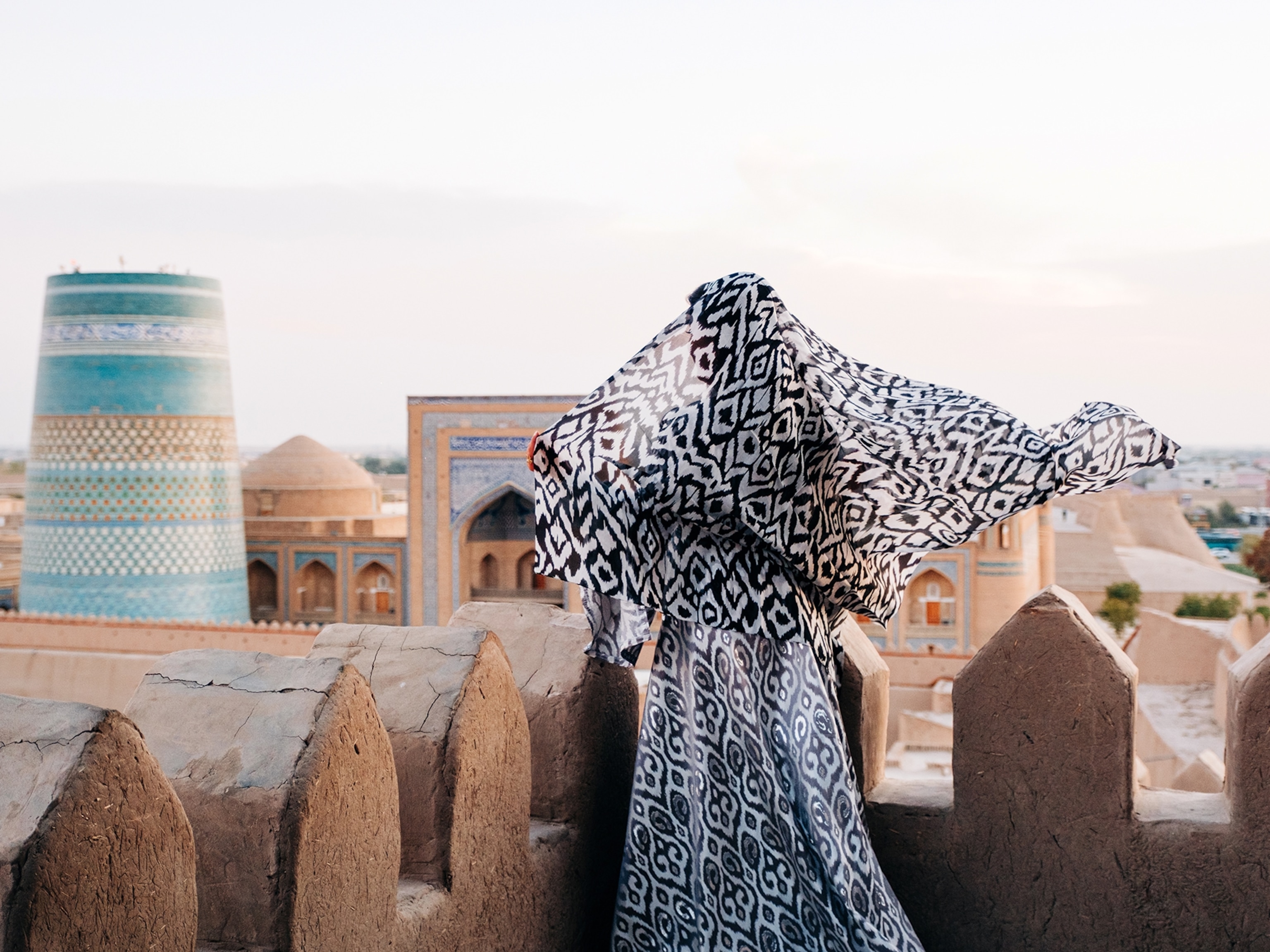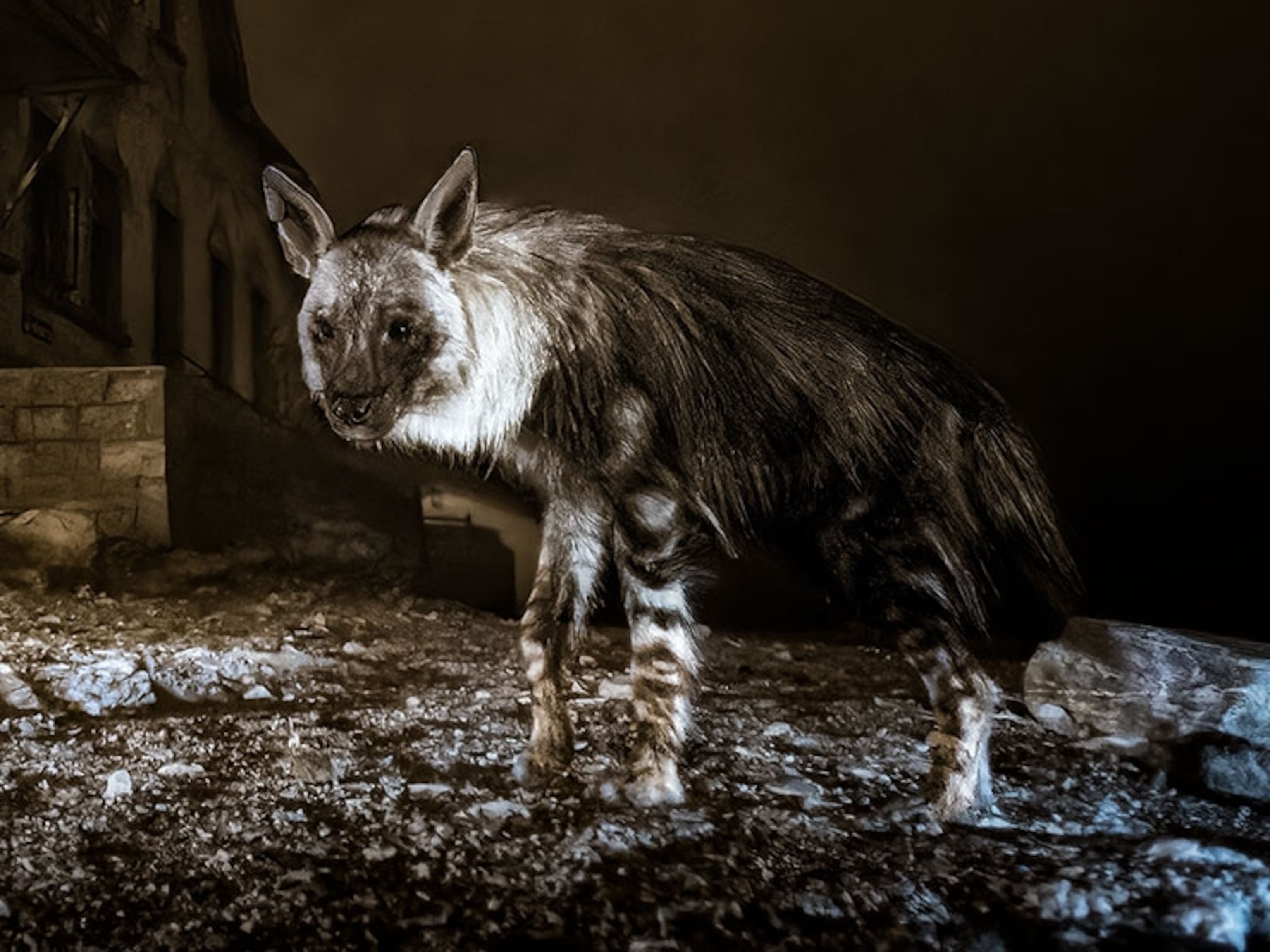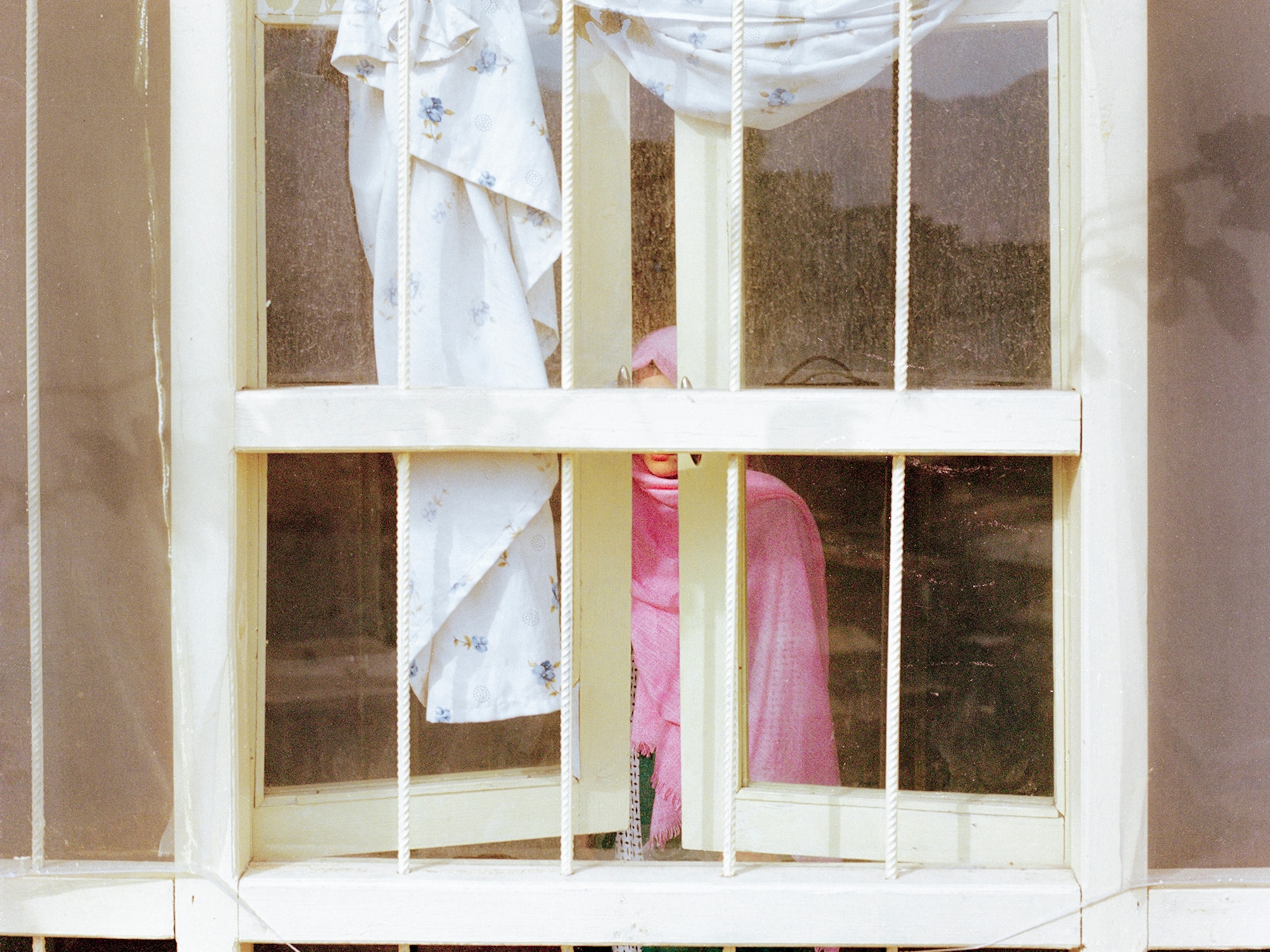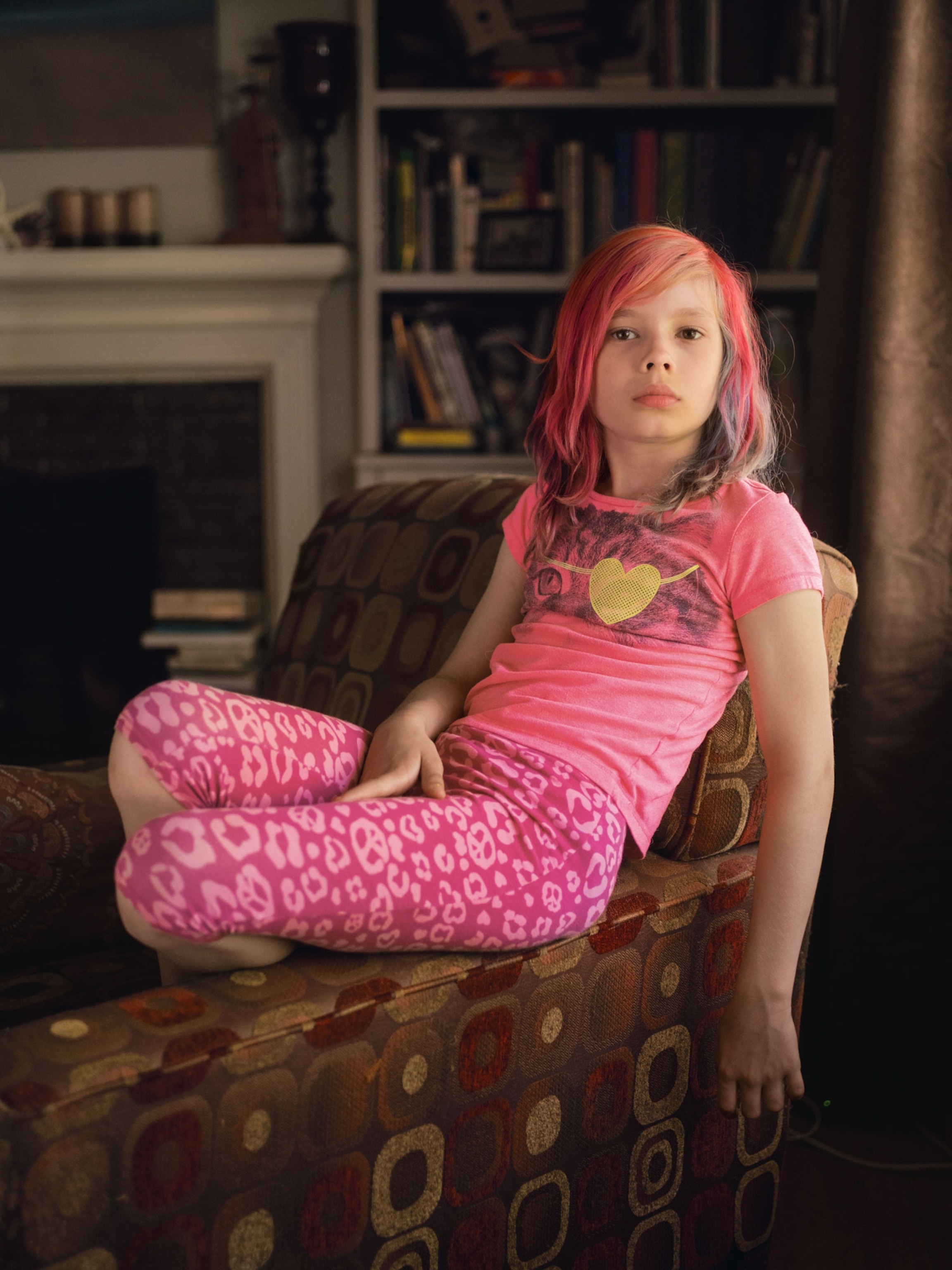
Pictures We Love
National Geographic editors choose the images from 2017 that intrigued, delighted, and moved them.
Sarah Leen, Director of Photography
I look at Avery Jackson with her pink hair, t-shirt, and tights and I think, "That's what courage looks like." For how does a 9 year-old know herself so well? And in knowing herself, she is setting herself apart in ways that may not always be compatible with her friend's or neighbor's opinions, and that may invite ridicule or scorn.
Yet there she is proud, perhaps a little defiant too, but committed to herself in spite of any obstacles. As she says, "The best thing about being a girl, is now I don't have to pretend to be a boy." I can feel the relief and freedom in that statement. And it makes me very happy.
I am so proud to have published Avery's portrait on the cover of our January issue dedicated to gender. That entire issue is also what courage looks like.

Patrick Witty, Deputy Director of Photography, Digital
There are moments within moments captured in William Daniels’ heart-wrenching photo of a family of Rohingya refugees inside a makeshift tent in Bangladesh.
Drama fills the entire frame, from the empty stares of the mother and child on the left to the boy on his back gazing towards the sky on the right.
Daniels masterfully captured the anguish and despair of one family among the 600,000 Rohingya fleeing persecution.

Kathy Moran, Senior Photo Editor
There is a peculiar grace and whimsy to Thomas Peschak’s photograph of marine iguanas on Isla Fernandina in the Galapagos.
The whip of the tail, the expression on the face of the middle lizard as it munches a dragonfly, and the position of the animal in the back takes you all around the image. It takes a moment to realize that the tail and the claws in the foreground belong to a mummified iguana.
Every time I presented this photograph, it took a minute for the viewers to realize that this was not a quirky look at iguanas soaking up the sun. That is what makes this such an impactful photograph – it works on multiple levels. It is both visually arresting and storytelling and it alludes to the potential impact of climate change in the Galapagos. Warming seas will kill the algae that these iguanas depend on.

Vaughn Wallace, Senior Photo Editor
This photo is full of the energy of life. High in the Ethiopian highlands, photographers Jeff Kerby and Trevor Frost spent years studying the lifestyle, habits and movements of geladas and it shows.
The intimacy of this photo offers its own narrative magic, inviting us closer to a vision of life that transcends words.
What caused this family of gelada, hundreds strong, to begin this sundown sprint to the safety of their sleeping cliffs? What is the sound of thundering feet upon the grasses of Guassa? Just one moment with this photo and my mind has already wandered to parts unknown.

Mallory Benedict, Associate Photo Editor, Digital
This photo by Kirsten Luce was taken for a story about firefly tourism in Mexico. Tourists flock to sanctuaries like this one in Santa Clara, Mexico to see the forest floor blanketed with fireflies, a spectacle which only happens a few weeks out of the year. People’s overwhelming fascination with these tiny insects has curbed logging in this area, created an economy for tourism for these small towns, and elevated the importance of preserving sacred spaces for animals of all sizes.
I love that this tiny bug, so simple and familiar to many of us, can inspire such curiosity and wonder in people, and can urge us to care about the preserve ecosystems in which they live. Nature can be simple and magical at the same time, if we let it.
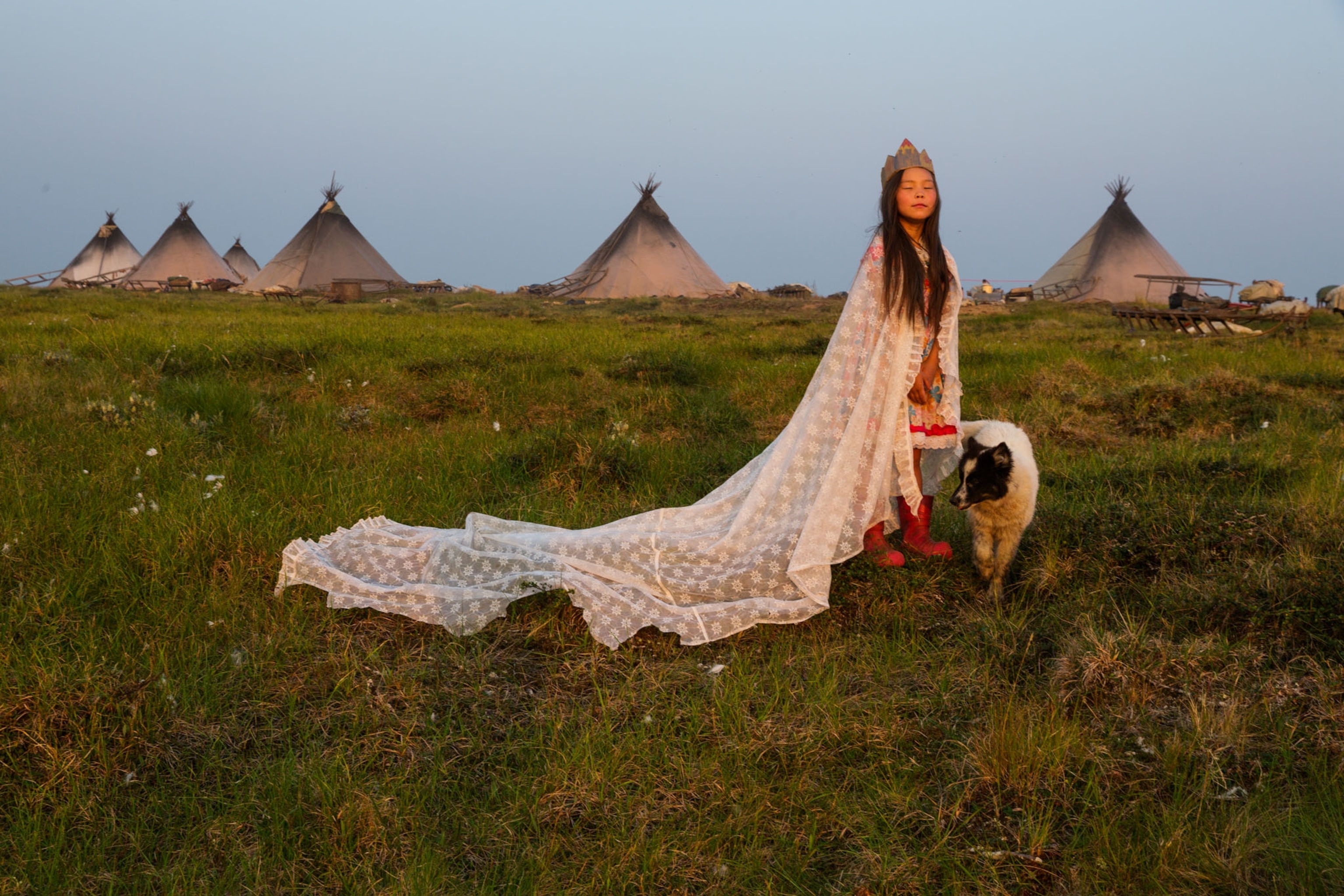
Gail Fletcher, Photo Coordinator
Evgenia Arbugaeva so beautifully captures the innocence of a childhood in this photograph.
Eight-year-old Kristina Khudi stands proud and defiant inside a world she has created for herself, despite the grueling environmental and social change existing around her.
This image invites us into a princess’s soft-hued dreamscape and reminds us that we can continue to look critically at our realities without completely sacrificing our sense of wonder and imagination.

Catherine Saba, Assistant Photo Editor, Digital
This photo captures a dreamy world I would have never imagined under the Antarctic ice. There is something fascinating about being able to see what is beneath the surface, especially in such an isolated place.
I love the stream of bubbles left behind as the emperor penguin, near the bottom of the frame, swims effortlessly through the water. The clarity and lighting of this moment provides me with a lingering feeling of peace and wonder.
Props to photographer Laurent Ballesta who made this strenuous deep dive under the ice to show us an incredible world teeming with life.
Danielle Amy, Photo Coordinator
I absolutely love the work of David Guttenfelder. This image, which was taken on assignment in North Korea, is one of my favorites. The composition is simple but the symbolism is complex.
North Korea has become even more shielded off from the outside world in the past decade and this photograph stands as a visual metaphor for the country’s position in the global arena.
The sailor’s protective gesture covers his face but still reveals his eyes. He is pushed back against the wall in a dark space yet the light still shines directly above him. The sailor uniform looks like a costume in a war museum. All these elements contribute to the making of an image that speaks beyond the physicality that was captured in this photograph—an excellent image that moved me beyond the frame.
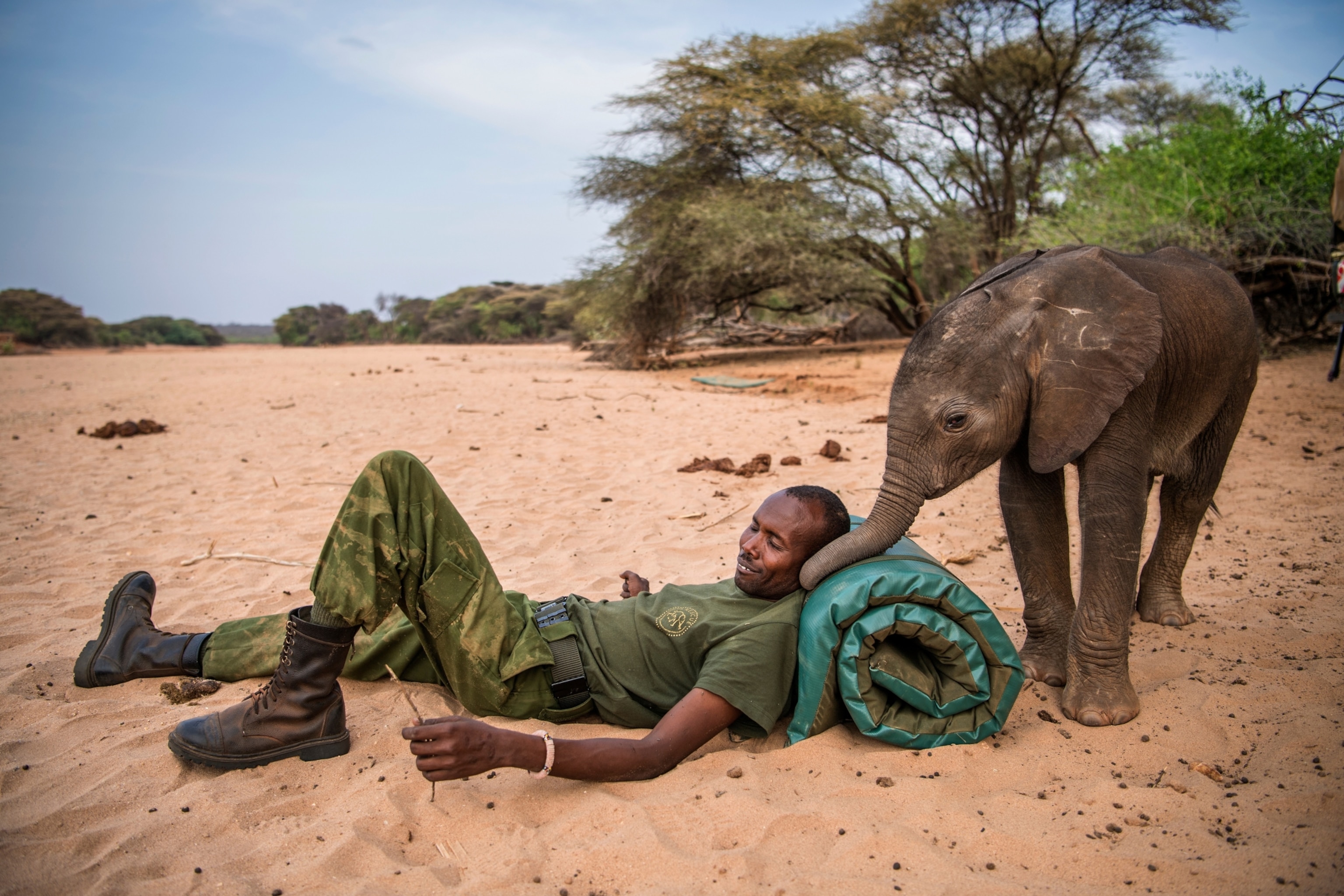
Alexa Keefe, Senior Photo Editor, Digital
When baby elephants are separated from their mothers, touch is critical to their survival in the first few hours—contact with another elephant is ideal, but a caring human will do.
Ami Vitale’s photographs of the Reteti elephant sanctuary in northern Kenya tell the story of the burgeoning love affair between the Samburu community and the wild elephants which sometimes fall into the wells the Samburu dig to water their livestock in this arid land.
The Samburu were once at odds with their elephant neighbors, but the sanctuary has brought them together in a way that benefits them both—the Samburu work as the caretakers, learning skills and earning income, while orphaned baby elephants are rescued and rehabilitated.
Ami’s photograph of Kinya with Rimland Lemojong, who helped in the rescue, stands out to me. This tender, playful moment embodies a connection between living beings who are in this life together, for better or worse.
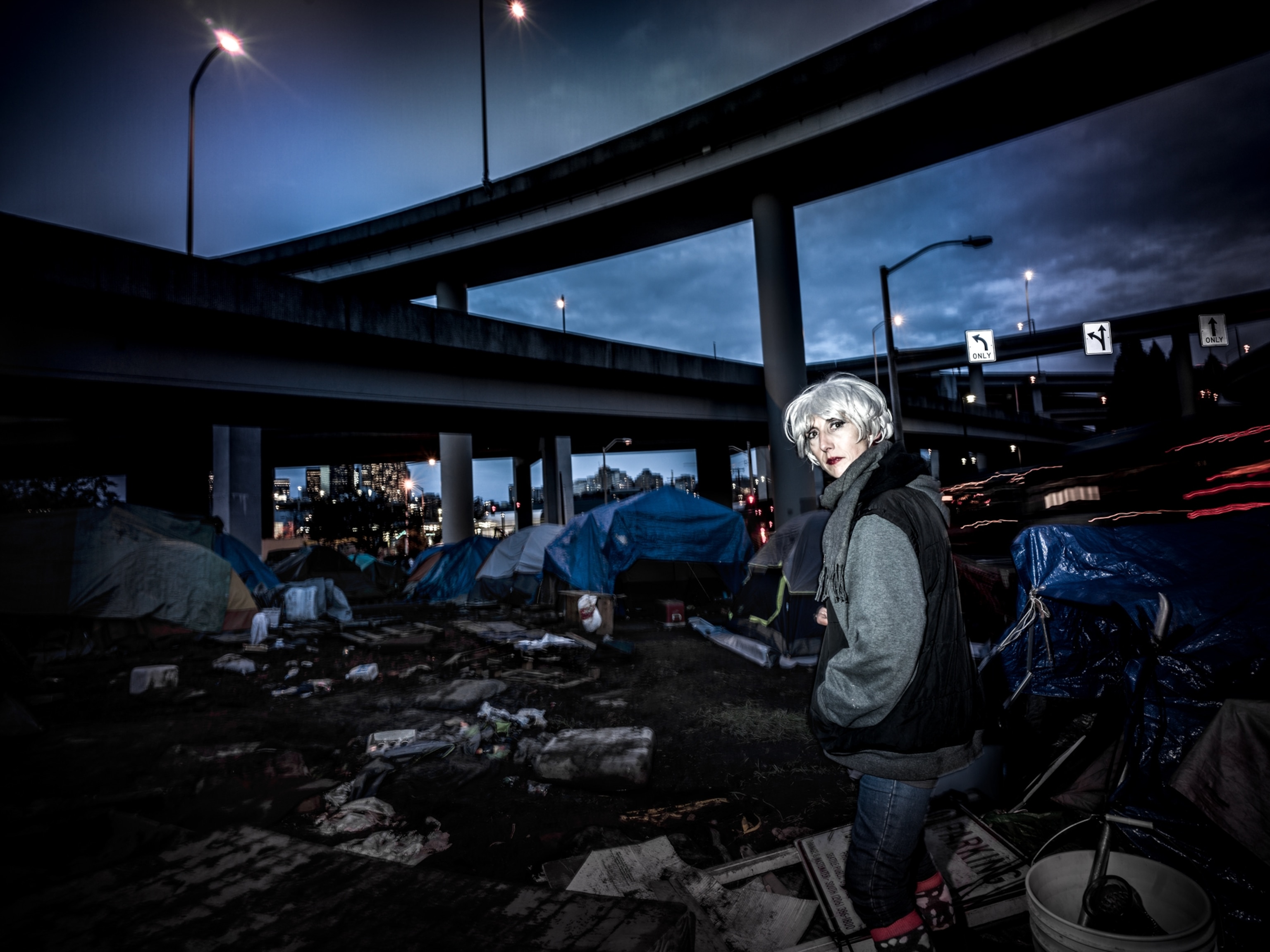
Todd James, Senior Photo Editor
I loved every single photo Max Aguilera-Hellweg shot for “The Addicted Brain” in our September issue, so picking only one of them seems a bit arbitrary. But this one illustrates one of Max’s finer qualities as a person and a photographer: empathy.
In this photograph, we meet Janna Raine, who is addicted to heroin and living underneath a Seattle freeway. Seeing her in this sprawling camp that she calls home helps us grasp the enormity of the opioid crisis in America. Our eyes meet hers in what feels like a fleeting moment. Her backwards glance makes it hard to look away and impossible not to wonder what her life is like.
Max is one of the most curious people I know. He is able to grasp and visualize complex science, whether it is biology or particle physics. He is also deeply empathetic and loves spending time with people and hearing their stories. He approaches his stories like a filmmaker. The result is a strong driving narrative with visual consistency that is both smart and caring. Bravo Max!
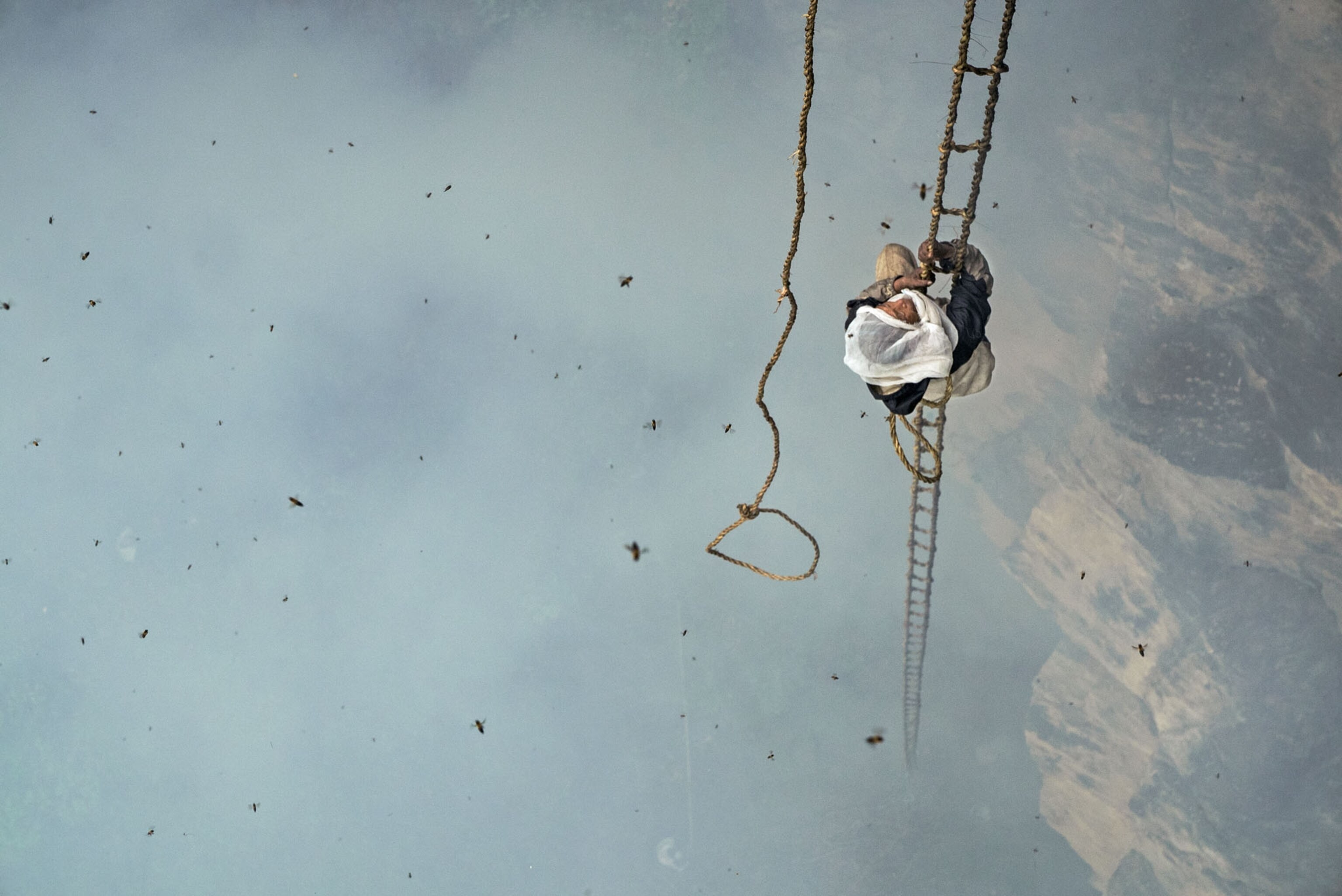
Sadie Quarrier, Senior Photo Editor
This surreal and intriguing image, the opener to our July story about the honey hunters of Nepal, is one I’m personally attached to. In one frame, photographer/filmmaker Renan Ozturk captures the mystery of this unique honey harvesting tradition.
I love the details that emerge through the smoke – the frayed bamboo ladder, the rope, the giant bees that almost pop out of the picture, the cloth cover revealing Mauli's grimacing face, the partially obscured rock wall beyond. And I love what is left for us to wonder about: How is Mauli climbing a swaying rope while bees attacks? How high is he off the ground? How is Renan shooting this image?
One of our core strengths is documenting unusual cultural traditions in the remotest regions of the world. And so when Renan offered me the opportunity to join him on his return trip to this remote area of Nepal, I went on my own time.
I saw first-hand how challenging it was for Renan to juggle multiple large cameras while spinning in space from a rope, being attacked by the world’s largest bees with the knowledge that one sting could be fatal—Renan developed a strong allergic reaction while on assignment. But he isn’t one to spend much time thinking about discomfort. He was far too keen to capture the scenes unfolding in front of him.
Elijah Walker, Associate Photo Editor, Digital
I love this image because it is historic, iconic, and of a person I find personally inspiring. This was the first time a sitting President has ever been captured in this way, opening himself up to the public. More than that it was Obama demonstrating his love and dedication to protecting the environment. And above all, it is an absolutely beautiful photograph.

Kurt Mutchler, Senior Editor, Science
The boy was stunned. Not from the whine from the motorbike engines that he heard from afar, or the strange blue containers they were carrying as they rode by, but because of the white man riding with one of the drivers.
Photographer William Daniels , on assignment for National Geographic magazine for story on vaccines, later learned that all the villagers under the age of 12 in this remote region of the Democratic Republic of the Congo had never seen a light-skinned person
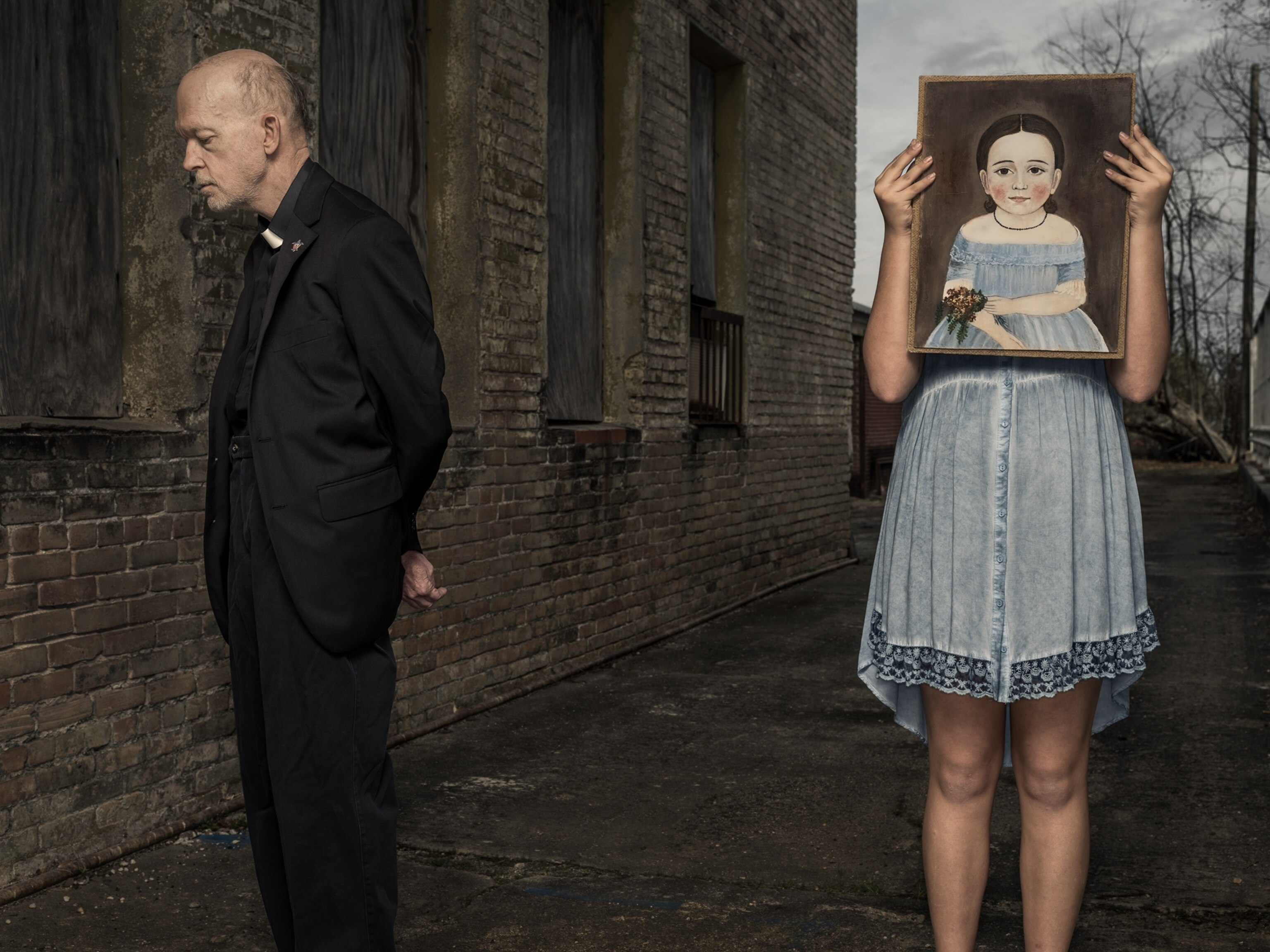
Molly Roberts, Senior Photo Editor
Dan Winters has a way of synthesizing both drama and empathy in his images. This image is from a series of portraits he created for the June feature story “Why We Lie”.
Turns out that we lie in big and small ways, and as a species, we lie often. As I looked for examples of the multiplicity of reasons for lying, self-aggrandizement is a very common reason, along with self-preservation, and sometimes we lie for good.
Dan’s portrait of Mark Landis, the art forger, hits a beautiful storytelling note. Landis’ reason for creating forgeries was altruistic because he donated them to museums which probably could not afford to purchase them.
The way the frame splits into a dark and moody side and a lighter, fanciful side seems a perfect way to tell Landis’ story. He admitted that when his forgery was exposed, he was very sorry only because he had to stop.
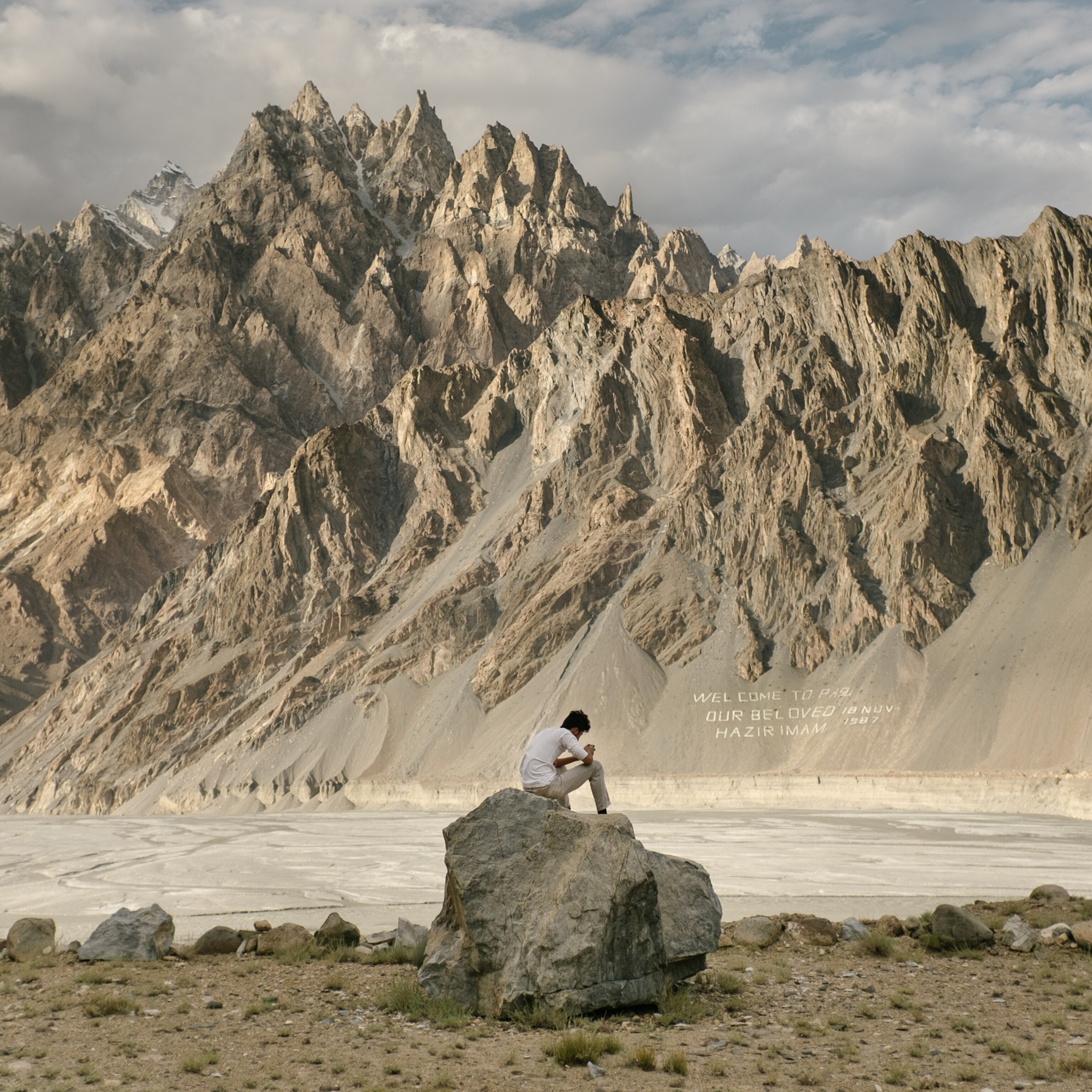
Jennifer Samuel, Associate Photo Editor
This opening image shot in the Gojali region of northern Pakistan by Matthieu Paley stands out as one of my favorites this year.
Amidst the dramatic landscape and beautiful light, there’s an air of serenity and solitude. Paley’s familiarity and love for the region shines through in all the images in this story; you really feel like he takes you on a journey with him.
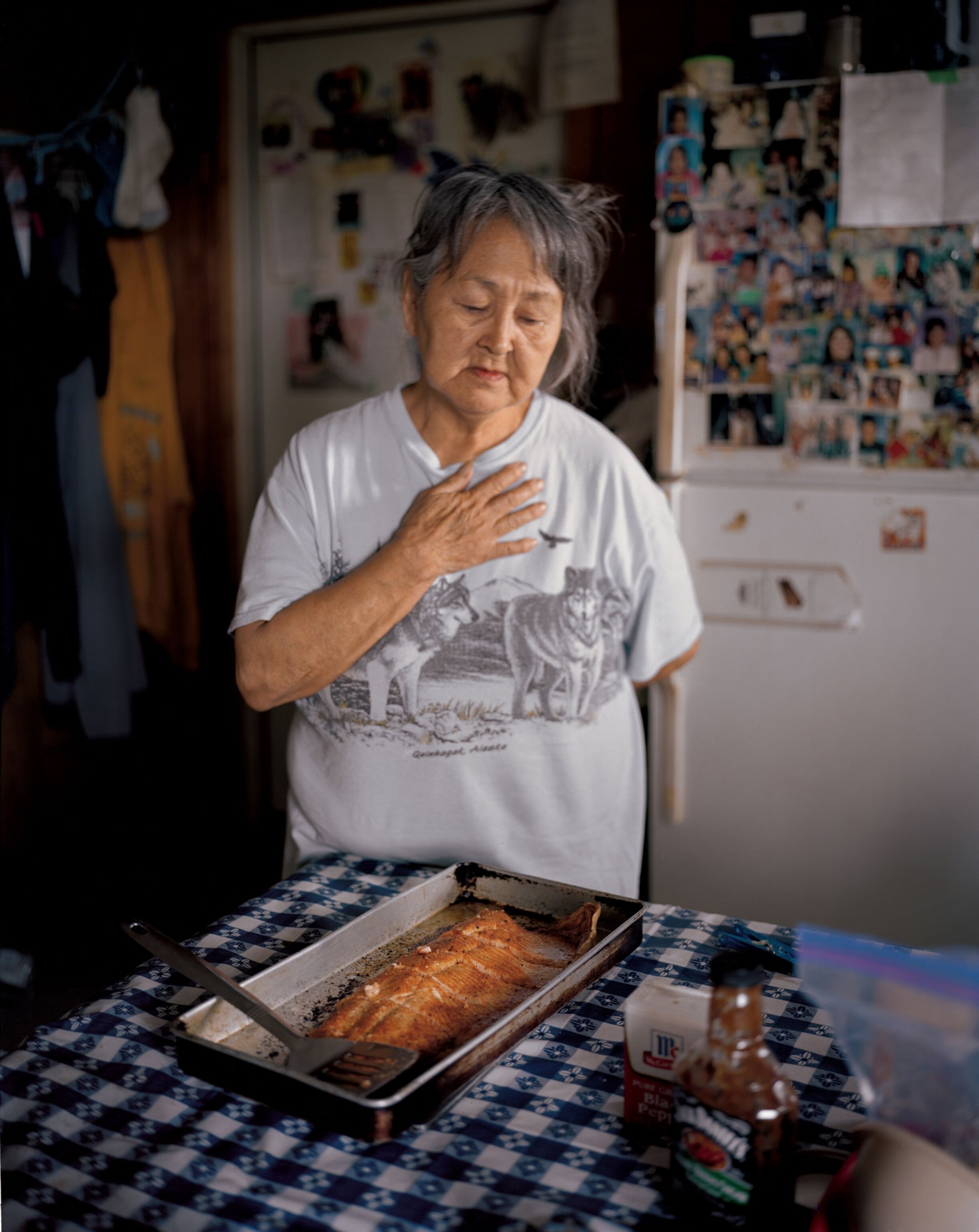
Julie Hau, Associate Photo Editor
Erika Larsen’s portrait of Emma Fullmoon, a descendent of the Yupik people, conveys the empathy and tenderness she feels for Emma and the People in Nunalleq, who are rediscovering their heritage as the permafrost around them slowly melts due to rising temperatures.

Matt Adams, Producer & Community Manager, Nat Geo Your Shot
As the curator for Your Shot's Daily Dozen I'm always looking for images that show the variety of subject matter we receive from our global community.
When I came upon this photograph from Thotsaphorn Prapaithong, I was amazed by just how much rain was pouring down on the Thai military soldiers. What really struck me was the expression on the face of the man in the center of the frame. His stoic look proved that he was focused and that marching through any type of climate was possible.
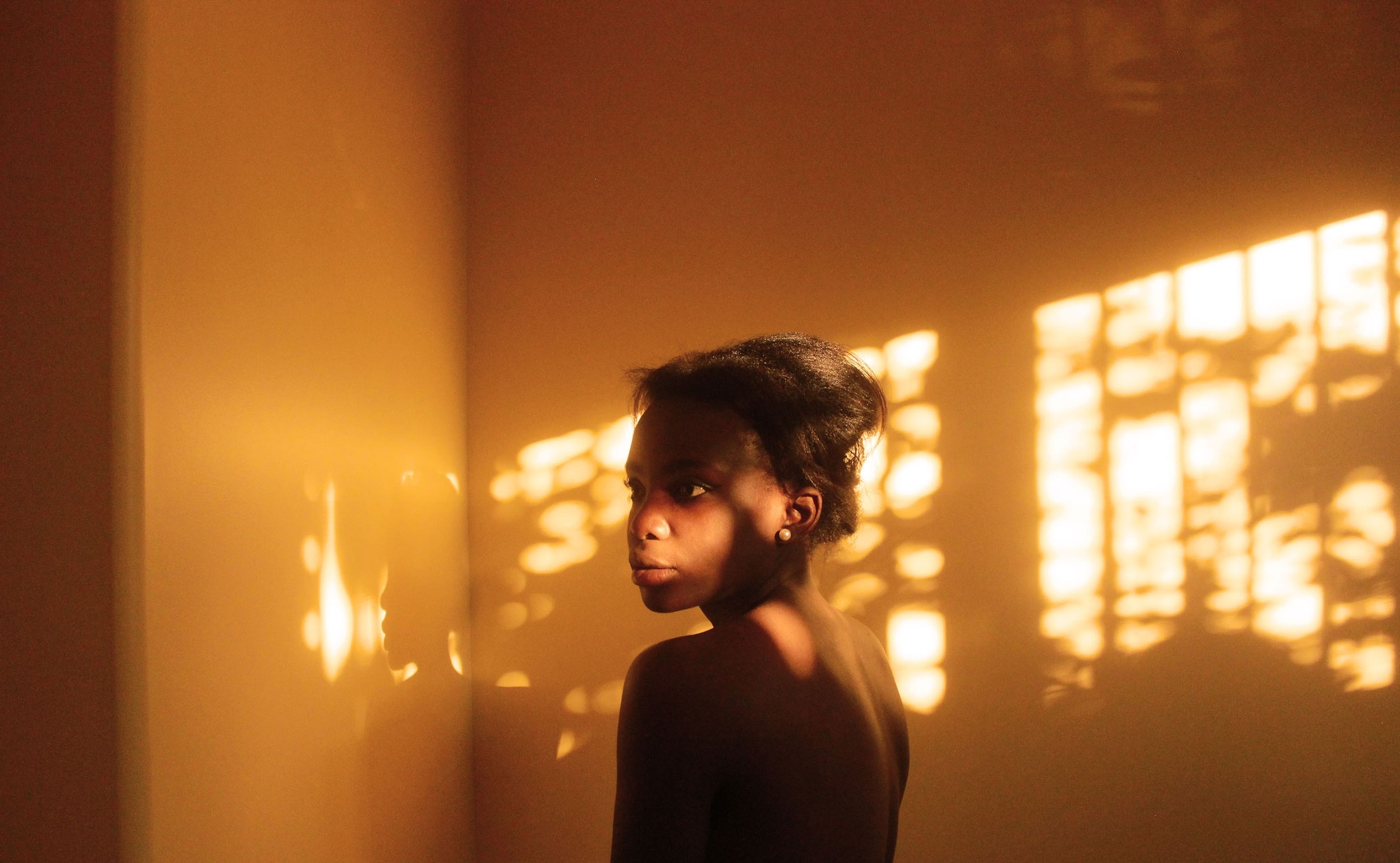
David Lee, Producer & Community Manager, Nat Geo Your Shot
I love how our Your Shot community connects strangers from around the world through a mutual love of photography and storytelling.
I love how this beautiful portrait by Ethel Nalule resonates with fellow Your Shot photographer Andrea LaRiviere, who commented “I like the rawness of this image. The light is beautiful and hot. I too have Lyme disease (have had it for over 11 years now). My skin does not hurt like yours, instead it is muscle pain all over my body in random places and severe migraines. My heart goes out to you. I hope you find a way to deal with the cruelties this disease inflicts. It seems you have through your photography.”
And what I really love is that Andrea is not the only Your Shot photographer who commented words of support and encouragement to Ethel.
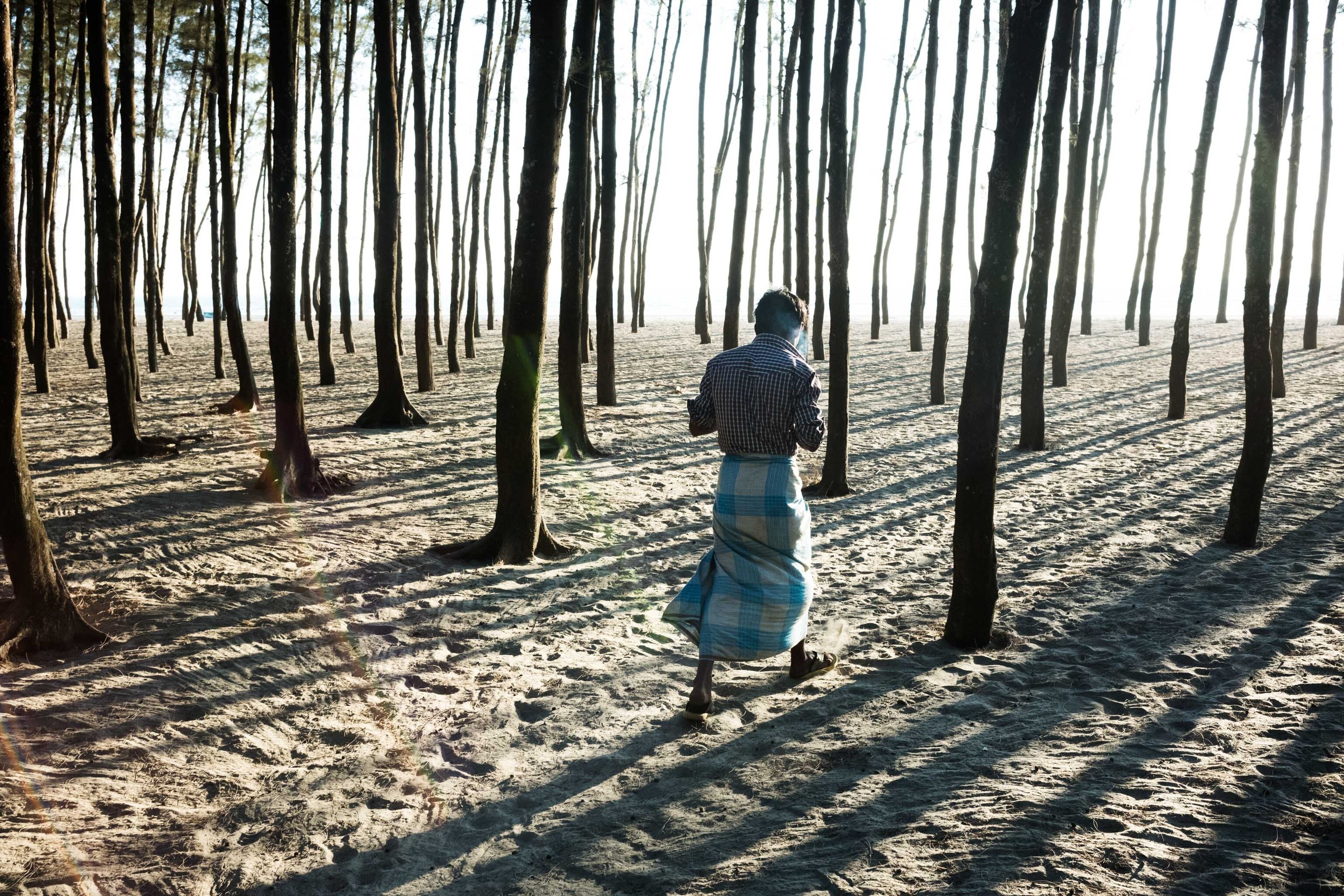
Jehan Jillani, Associate Photo Editor, Digital
This year we were inundated with devastating images of the Rohingya fleeing religious persecution in Myanmar–the sick, the starving, the heartbroken. We sent photographer William Daniels to Bangladesh to document their plight, and the resulting images capture the depth and complexity of this ongoing humanitarian crisis.
This photograph of a Rohingya Muslim walking through a wooded area outside of Cox’s Bazaar resonated with me in particular–amidst the chaos of the crisis, Daniel’s stumbled upon a moment of quiet, almost transcendent beauty.
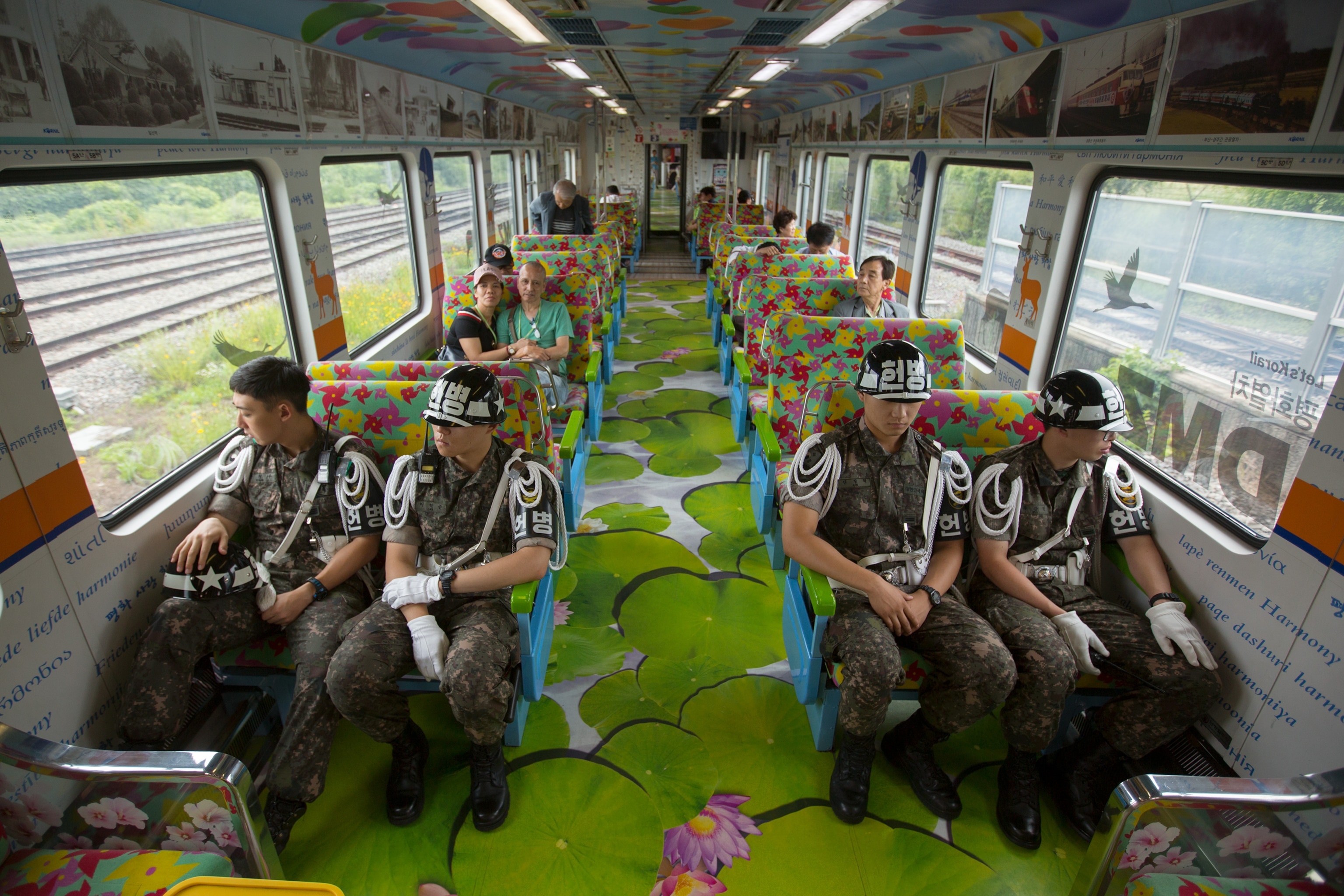
Jeff Heimsath, Associate Photo Editor
I love this photo because it captures the bizarre juxtapositions that permeate Korea’s Demilitarized Zone. Stone-faced, camouflaged soldiers sit in sharp contrast with the train’s bright decor, which looks more like a preschool classroom than a war memorial. But this surreal image alludes to the DMZ’s many meanings—simultaneously a military base, a place of tragedy, and a tourist attraction.
Photographer David Guttenfelder traveled to the Korean border where he stood on both sides of the DMZ to capture this strange duality. The resulting images show a place of healing—where history is remembered and memorialized—but they also show a physical barrier that continues to prevent meaningful connection between two divided nations.

Jamie Wellford, Senior Photo Editor, Global Affairs
In a world flush with powerful imagery, I have always marveled at a photographer’s skill to capture feeling and moment in a still frame. Anand Varma’s story for National Geographic on hummingbirds is an exquisite example of such a moment.
Spending well over a year working on the story, Anand has rendered a remarkable crystalline image of a species of bird renown for its mesmerizing habits and pattern of flight. Channeling this extravagant beauty and motion into a still frame, Anand has distilled the power and mystery of nature into an extraordinary photograph showing us a world few have seen in such arrested detail.
Surprising and revelatory, Anand’s photograph and series on hummingbirds is a must see.

